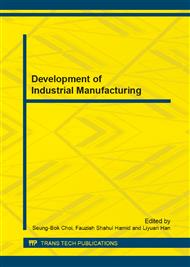p.573
p.583
p.588
p.593
p.598
p.603
p.607
p.611
p.616
Research on Ratio Selection of Mixed LiBr-CaCl2 Solution for Liquid Desiccant Cooling System
Abstract:
In recent years, liquid desiccant cooling system has shown its potential research value for its low-grade heat using and energy-saving. Thermal properties of liquid desiccant, especially its vapor pressure greatly affects the dehumidification efficiency of this system. Here comes the problem to find a liquid desiccant with better dehumidification effect and lower cost. To solve this problem, a local composition model: nonrandom two-liquid (NRTL) theory could be used to calculate a mixed solution of LiBr-CaCl2, and calculates the ideal mixing ratio of this solution in a working environment. The best mixing ratio with cost-effectiveness can be worked out by taking into account the initial cost of the solution. Study shows that: compared to single LiBr solution, the dehumidification effect could be raised by more than 8.2% and the costs could be reduced by 20% with mixed LiBr-CaCl2 solution.
Info:
Periodical:
Pages:
598-602
Citation:
Online since:
February 2014
Authors:
Price:
Сopyright:
© 2014 Trans Tech Publications Ltd. All Rights Reserved
Share:
Citation:


